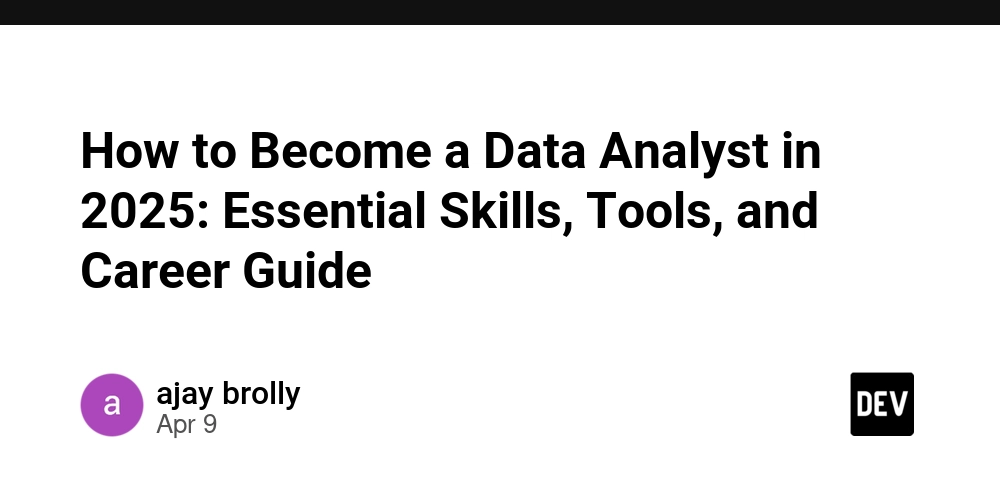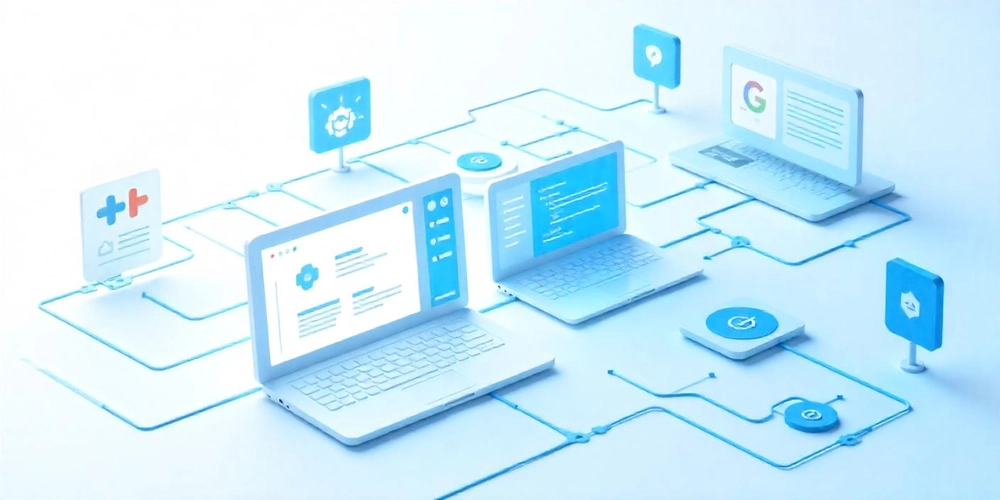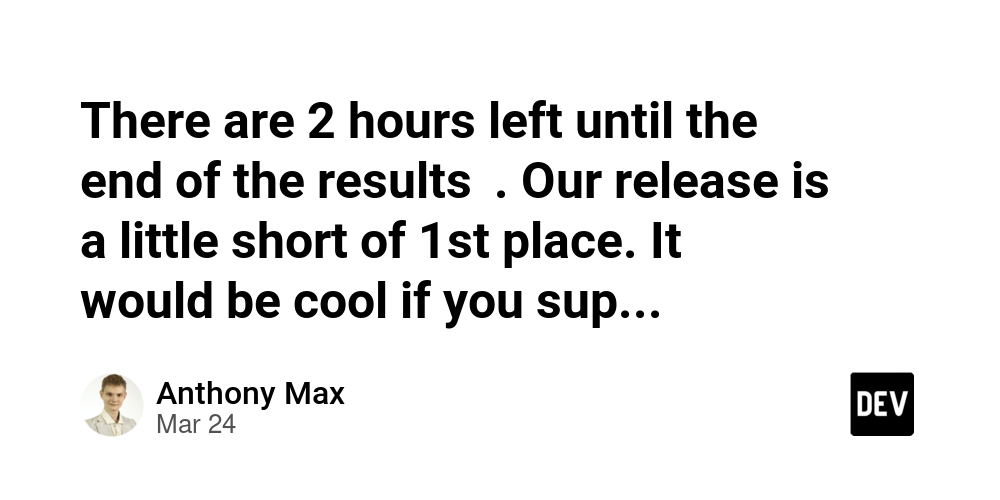How to Become a Data Analyst in 2025: Essential Skills, Tools, and Career Guide
In today's data-driven world, organizations across every industry rely on data to inform decisions, measure performance, and identify growth opportunities. As a result, the role of a data analyst has become one of the most in-demand and respected positions in the job market. Whether you are a student exploring career options, a professional considering a transition, or someone simply interested in data, this guide provides a comprehensive overview of how to become a data analyst in 2025. We will explore what the role entails, what skills and tools are required, and how to begin and grow your career in data analytics. What Does a Data Analyst Do? A data analyst is responsible for gathering, cleaning, analyzing, and interpreting data to help organizations make better decisions. Their work involves identifying trends, developing insights, and presenting data in a way that is easy for stakeholders to understand. For example, a data analyst might help a retail company analyze sales data to determine which products are most popular, or they might work with a healthcare provider to understand patient treatment outcomes. The primary responsibilities of a data analyst typically include: Collecting and managing large sets of structured and unstructured data Cleaning and preparing data for analysis Conducting statistical analyses to identify trends and patterns Visualizing data through charts, graphs, and dashboards Communicating findings to non-technical stakeholders Key Skills Required to Become a Data Analyst To succeed as a data analyst, you need a blend of technical, analytical, and communication skills. Here are the essential skills to focus on in 2025: Statistical and Analytical Thinking Understanding basic statistics is crucial for analyzing data effectively. You should be comfortable with concepts such as mean, median, standard deviation, correlation, regression, and probability. Analytical thinking is equally important, as it allows you to interpret results in a meaningful business context. Programming Languages Python is the most widely used programming language in data analytics. It offers powerful libraries such as pandas, NumPy, and Matplotlib that simplify data manipulation and visualization. R is another statistical language commonly used in academic and research-focused roles. SQL (Structured Query Language) SQL is a must-have skill for data analysts. It is used to retrieve, filter, aggregate, and manipulate data from databases. Proficiency in SQL enables analysts to work efficiently with large datasets and understand the underlying data structures. Data Visualization Being able to present your findings clearly and effectively is a critical skill. Tools like Tableau and Power BI allow you to create interactive dashboards and visual reports that help decision-makers understand key insights at a glance. Business Acumen Beyond technical skills, a good data analyst understands the industry they work in. Knowing the goals and challenges of the business helps you ask the right questions and deliver actionable insights that have real impact. Top Tools to Learn in 2025 Technology evolves rapidly, but the following tools are expected to remain essential for data analysts in 2025: Python: For data processing, analysis, and automation SQL: For querying and managing data in relational databases Tableau and Power BI: For data visualization and dashboard creation Excel: Still widely used for quick data analysis and reporting Google BigQuery or Snowflake: For working with large-scale cloud data Jupyter Notebooks: For documenting code and analyses in an organized format How to Start Your Career as a Data Analyst Here is a step-by-step guide to becoming a data analyst, even if you have no prior experience: Step 1: Learn the Fundamentals Begin by learning statistics, Excel, and the basics of SQL. These foundational tools and concepts will help you get comfortable with data and understand core analysis techniques. Step 2: Learn Python and Visualization Tools Once you are confident with the basics, start learning Python and how to use it for data cleaning, transformation, and analysis. At the same time, explore tools like Tableau or Power BI to visualize your findings. Step 3: Work on Real Projects Build a portfolio by working on real-world datasets. You can find open data sources online and use them to create reports, dashboards, or case studies. A strong portfolio is often more valuable than a resume alone. Step 4: Apply for Internships or Entry-Level Roles Look for job titles such as Junior Data Analyst, Business Intelligence Analyst, or Data Coordinator. These roles are excellent starting points for gaining industry experience and improving your skills. Step 5: Continue Learning and Specializing As you gain experience, consider specializing in specific areas such as marketing analytics, financial analysis, healthcare data, or product analytics. You can also explore advanced fields like machi

In today's data-driven world, organizations across every industry rely on data to inform decisions, measure performance, and identify growth opportunities. As a result, the role of a data analyst has become one of the most in-demand and respected positions in the job market.
Whether you are a student exploring career options, a professional considering a transition, or someone simply interested in data, this guide provides a comprehensive overview of how to become a data analyst in 2025. We will explore what the role entails, what skills and tools are required, and how to begin and grow your career in data analytics.
What Does a Data Analyst Do?
A data analyst is responsible for gathering, cleaning, analyzing, and interpreting data to help organizations make better decisions. Their work involves identifying trends, developing insights, and presenting data in a way that is easy for stakeholders to understand.
For example, a data analyst might help a retail company analyze sales data to determine which products are most popular, or they might work with a healthcare provider to understand patient treatment outcomes.
The primary responsibilities of a data analyst typically include:
Collecting and managing large sets of structured and unstructured data
Cleaning and preparing data for analysis
Conducting statistical analyses to identify trends and patterns
Visualizing data through charts, graphs, and dashboards
Communicating findings to non-technical stakeholders
Key Skills Required to Become a Data Analyst
To succeed as a data analyst, you need a blend of technical, analytical, and communication skills. Here are the essential skills to focus on in 2025:
Statistical and Analytical Thinking
Understanding basic statistics is crucial for analyzing data effectively. You should be comfortable with concepts such as mean, median, standard deviation, correlation, regression, and probability. Analytical thinking is equally important, as it allows you to interpret results in a meaningful business context.Programming Languages
Python is the most widely used programming language in data analytics. It offers powerful libraries such as pandas, NumPy, and Matplotlib that simplify data manipulation and visualization. R is another statistical language commonly used in academic and research-focused roles.SQL (Structured Query Language)
SQL is a must-have skill for data analysts. It is used to retrieve, filter, aggregate, and manipulate data from databases. Proficiency in SQL enables analysts to work efficiently with large datasets and understand the underlying data structures.Data Visualization
Being able to present your findings clearly and effectively is a critical skill. Tools like Tableau and Power BI allow you to create interactive dashboards and visual reports that help decision-makers understand key insights at a glance.Business Acumen
Beyond technical skills, a good data analyst understands the industry they work in. Knowing the goals and challenges of the business helps you ask the right questions and deliver actionable insights that have real impact.
Top Tools to Learn in 2025
Technology evolves rapidly, but the following tools are expected to remain essential for data analysts in 2025:
Python: For data processing, analysis, and automation
SQL: For querying and managing data in relational databases
Tableau and Power BI: For data visualization and dashboard creation
Excel: Still widely used for quick data analysis and reporting
Google BigQuery or Snowflake: For working with large-scale cloud data
Jupyter Notebooks: For documenting code and analyses in an organized format
How to Start Your Career as a Data Analyst
Here is a step-by-step guide to becoming a data analyst, even if you have no prior experience:
Step 1: Learn the Fundamentals
Begin by learning statistics, Excel, and the basics of SQL. These foundational tools and concepts will help you get comfortable with data and understand core analysis techniques.
Step 2: Learn Python and Visualization Tools
Once you are confident with the basics, start learning Python and how to use it for data cleaning, transformation, and analysis. At the same time, explore tools like Tableau or Power BI to visualize your findings.
Step 3: Work on Real Projects
Build a portfolio by working on real-world datasets. You can find open data sources online and use them to create reports, dashboards, or case studies. A strong portfolio is often more valuable than a resume alone.
Step 4: Apply for Internships or Entry-Level Roles
Look for job titles such as Junior Data Analyst, Business Intelligence Analyst, or Data Coordinator. These roles are excellent starting points for gaining industry experience and improving your skills.
Step 5: Continue Learning and Specializing
As you gain experience, consider specializing in specific areas such as marketing analytics, financial analysis, healthcare data, or product analytics. You can also explore advanced fields like machine learning or data engineering.
Job Market Outlook and Salary Trends
The demand for data analysts continues to grow in 2025. According to recent industry reports, data analyst roles are among the top 10 most in-demand jobs across multiple sectors including technology, healthcare, finance, and e-commerce.
Average salary (United States): Ranges between $70,000 and $100,000, depending on experience and location
Remote opportunities: Many companies now offer remote or hybrid roles for data professionals
Job security: Data analysis skills are transferable across industries, offering excellent long-term career security
Common Interview Questions for Data Analysts
If you are preparing for interviews, here are some questions you may encounter:
Write a SQL query to find the top five customers by purchase amount.
Explain how you would approach analyzing a sudden drop in website traffic.
Describe a project where you used Python to clean and analyze data.
Walk through a dashboard you built and explain the insights it provided.
Practicing with mock interviews and solving real-world problems can help you become confident during the hiring process.
Final Thoughts
Becoming a data analyst in 2025 is an achievable and rewarding goal. With the right skills, tools, and mindset, you can enter a field that is not only in high demand but also offers opportunities for continuous learning and impact.
Data analysis is more than just crunching numbers—it is about understanding the story behind the data and helping organizations make smarter, evidence-based decisions. If you enjoy problem-solving, working with data, and making sense of complex information, then a career as a data analyst may be the perfect fit for you.









































































































































































![[The AI Show Episode 143]: ChatGPT Revenue Surge, New AGI Timelines, Amazon’s AI Agent, Claude for Education, Model Context Protocol & LLMs Pass the Turing Test](https://www.marketingaiinstitute.com/hubfs/ep%20143%20cover.png)







































































































































































































































.png?#)


































































































































![[Fixed] Gemini app is failing to generate Audio Overviews](https://i0.wp.com/9to5google.com/wp-content/uploads/sites/4/2025/03/Gemini-Audio-Overview-cover.jpg?resize=1200%2C628&quality=82&strip=all&ssl=1)

![What’s new in Android’s April 2025 Google System Updates [U: 4/14]](https://i0.wp.com/9to5google.com/wp-content/uploads/sites/4/2025/01/google-play-services-3.jpg?resize=1200%2C628&quality=82&strip=all&ssl=1)













![Apple Seeds tvOS 18.5 Beta 2 to Developers [Download]](https://www.iclarified.com/images/news/97011/97011/97011-640.jpg)
![Apple Releases macOS Sequoia 15.5 Beta 2 to Developers [Download]](https://www.iclarified.com/images/news/97014/97014/97014-640.jpg)































































































































